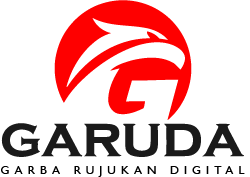Implementation of the CNN Deep Learning Method in Tajong (Sarung) Samarinda Classification
Abstract
Samarinda sarongs are one of Indonesia's traditional fabrics that are famous for their beautiful motifs and textures. This fabric is made using traditional weaving techniques using non-machine looms (ATBMs), resulting in a unique and distinctive diversity of textures. The difference between the loom, namely the machine and the non-machine, resulting in a difference in the texture of the Samarinda sarong. This difference can be seen from the thread density, texture smoothness, and sharpness of the motif. On certain Samarinda sarong motifs that do not require special details. This study aims to develop a classification model of Samarinda sarong texture based on the loom (machine and non-machine) using the Deep Learning method. This model is expected to help, increase the selling value of Samarinda sarongs, preserve and promote traditional fabrics In this context, the choice between DenseNet121 and VGG16 can depend on user preferences or specific needs, such as computing speed or model size.
Full Text:
PDFReferences
Hussain, M. A. I., Khan, B., Wang, Z., & Ding, S, “Woven fabric pattern recognition and classification based on deep convolutional neural networks,” Electronics (Switzerland), 9(6), 2020. https://doi.org/10.3390/electronics9061048
Kumar, K. S., & Bai, M. R, “LSTM based texture classification and defect detection in a fabric. Measurement: Sensors”, 26, 2023. https://doi.org/10.1016/j.measen.2022.100603
Agastya, I. M. A., & Setyanto, A, “Classification of Indonesian batik using deep learning techniques and data augmentation”, Proceedings - 2018 3rd International Conference on Information Technology, Information Systems and Electrical Engineering, ICITISEE 2018. https://doi.org/10.1109/ICITISEE.2018.8720990
Andrian, R., Hermanto, B., & Kamil, R. (2019). The Implementation of Backpropagation Artificial Neural Network for Recognition of Batik Lampung Motive. Journal of Physics: Conference Series, 1338(1), 0–10. https://doi.org/10.1088/1742-6596/1338/1/012062
Aras, S., Setyanto, A., & Rismayani. (2022). Classification of Papuan Batik Motifs Using Deep Learning and Data Augmentation. 2022 4th International Conference on Cybernetics and Intelligent System, ICORIS 2022. https://doi.org/10.1109/ICORIS56080.2022.10031320
Fadlil, A., Riadi, I., & Purwadi Putra, I. J. D. E. (2023). Comparison of Machine Learning Performance Using Naive Bayes and Random Forest Methods to Classify Batik Fabric Patterns. Revue d’Intelligence Artificielle, 37(2), 379–385. https://doi.org/10.18280/ria.370214
Haralick RM, S. K. (1973). IEEE Transactions on systems, man, and cybernetics:610– 621, 1973. Textural Features for Image Classification, 3, 610–621.
Hu, Y., Long, Z., Sundaresan, A., Alfarraj, M., AlRegib, G., Park, S., & Jayaraman, S. (2021). Fabric surface characterization: assessment of deep learning-based texture representations using a challenging dataset. Journal of the Textile Institute, 112(2). https://doi.org/10.1080/00405000.2020.1757296
Juwita, A. R., & Solichin, A. (2018). Batik pattern identification using GLCM and artificial neural network backpropagation. Proceedings of the 3rd International Conference on Informatics and Computing, ICIC 2018. https://doi.org/10.1109/IAC.2018.8780412
Khasanah, C. U., Utami, E., & Raharjo, S. (2020). Implementation of Data Augmentation Using Convolutional Neural Network for Batik Classification. 2020 8th International Conference on Cyber and IT Service Management, CITSM 2020, 20–24. https://doi.org/10.1109/CITSM50537.2020.9268890
Kusanti, J., & Suprapto, A. (2019). Combination of Otsu and Canny Method to Identify the Characteristics of Solo Batik as Surakarta Traditional Batik. Proceedings - 2019 2nd International Conference of Computer and Informatics Engineering: Artificial Intelligence Roles in Industrial Revolution 4.0, IC2IE 2019. https://doi.org/10.1109/IC2IE47452.2019.8940884
Lizarraga-Morales, R. A., Correa-Tome, F. E., Sanchez-Yanez, R. E., & Cepeda-Negrete, J. (2019). On the Use of Binary Features in a Rule-Based Approach for Defect Detection on Patterned Textiles. IEEE Access, 7. https://doi.org/10.1109/ACCESS.2019.2896078
Putra, M. T. D., & Kusuma, G. P. (2019). Batik Classification using Deep Learning. International Journal of Recent Technology and Engineering (IJRTE), 8(4), 11416–11421. https://doi.org/10.35940/ijrte.d9039.118419
Seçkin, A. Ç., & Seçkin, M. (2022). Detection of fabric defects with intertwined frame vector feature extraction. Alexandria Engineering Journal, 61(4). https://doi.org/10.1016/j.aej.2021.08.017
Septiarini, A., Saputra, R., Tedjawati, A., Wati, M., & Hamdani, H. (2022). Pattern Recognition of Sarong Fabric Using Machine Learning Approach Based on Computer Vision for Cultural Preservation. International Journal of Intelligent Engineering and Systems, 15(5), 284–295. https://doi.org/10.22266/ijies2022.1031.26
Simon, P., & Uma, V. (2020). Deep Learning based Feature Extraction for Texture Classification. Procedia Computer Science, 171. https://doi.org/10.1016/j.procs.2020.04.180
Szeliski, R. (2021). Computer Vision : Algorithms and Applications 2nd Edition. In Springer.
DOI: https://doi.org/10.31284/j.jasmet.2024.v5i2.6406
Refbacks
- There are currently no refbacks.
Copyright (c) 2024 Sitti Muhartini, Andi Sunyoto, Alva Hendi Muhammad

This work is licensed under a Creative Commons Attribution-ShareAlike 4.0 International License.
Mailing Address: Journal of Applied Sciences, Management and Engineering Technology - ITATS Institut Teknologi Adhi Tama Surabaya Jl. Arief Rahman Hakim No.100, Surabaya 60117 email: [email protected] Website : https://ejurnal.itats.ac.id/jasmet/index

This work is licensed under a Creative Commons Attribution-ShareAlike 4.0 International License.









